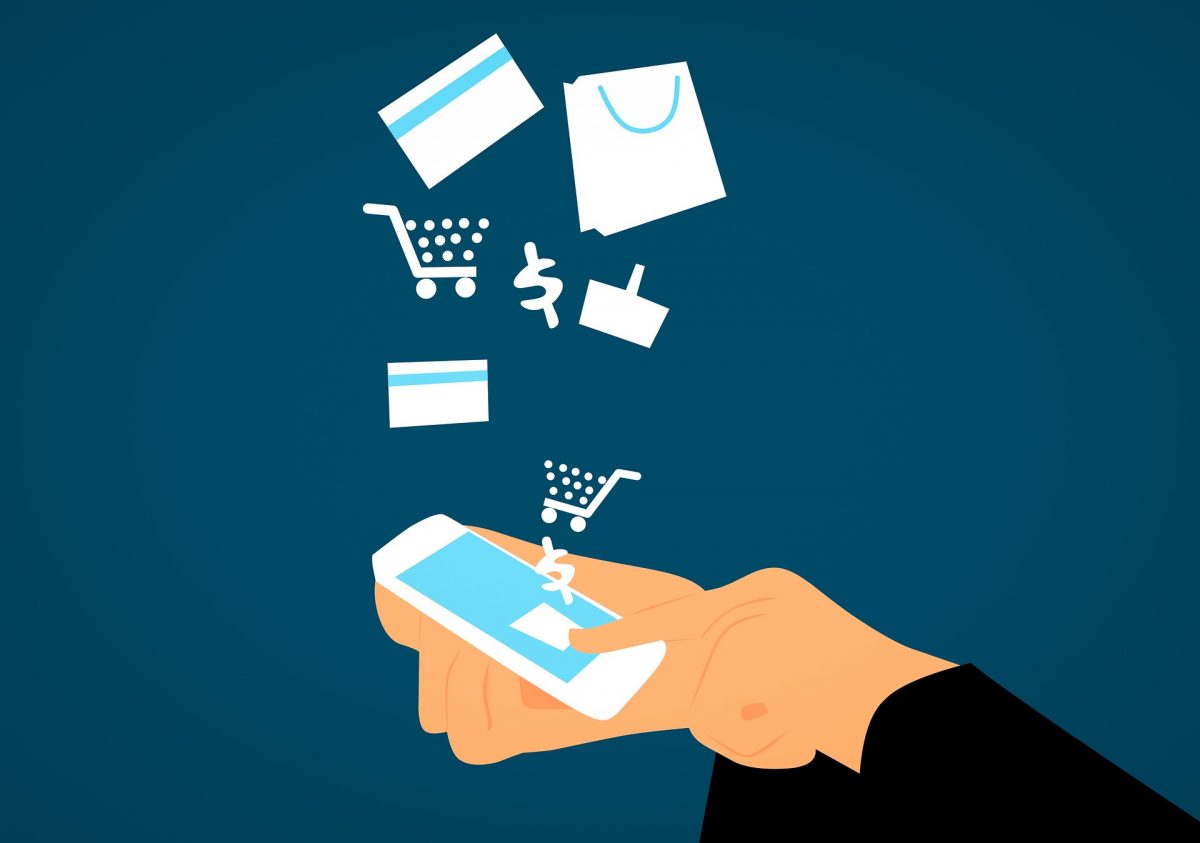Digital Economy
Social Commerce As a Sales Platform in Southeast Asia
Published
5 years agoon
By
SEADS TEAM
Turning strangers into friends is easy with social media. But how about turning these friends into customers? That’s where social commerce comes in.
A whopping 3.5 billion social media users exist today and there’s definitely more to come in the future. Social media has taken over our daily lives even before we know it.
We mainly use social media for entertainment, expression, and communication with our families and friends. But now, social media has turned into a sales platform that changed the way we shop today.
What is Social Commerce?
Switching from website to website when shopping online can be a tedious task. Now, social commerce has become one of the preferred avenues for shopping and discovering products.
Social commerce (s-commerce) is a subset of e-commerce where commercial products and services are directly sold using social media networks. It also provides support and creates a community for both buyers and sellers.
Some may argue that it doesn’t get the whole essence of what social commerce is or the type of environment it creates. To simplify, we can see social commerce as an umbrella term for:
- Buying and selling commercial products on social media
- Creating an online community for consumers and merchants
- Product reviews left by users
- User-generated content reviewing products on e-commerce sites
- Ads on social networks with call-to-action
- Peer-to-peer buying and selling
- Buy buttons on posts and walls
- Options for money-transfer without leaving the social network
Here, the focus will be on social commerce of social media. Consumer behavior is constantly shifting but since more people spend around one third of their total internet time on social media, it totally makes sense to utilize the social platforms available today.
Accessible and flexible commerce
Social media was initially used for advertisements and reviews in marketing while the buying process happens elsewhere known as the ROPO effect (Research Online; Shop Offline).
With social commerce, transactions became more accessible and created more “experience” as it mimics the way we walk into a store and purchase a product. The concept isn’t entirely new because social commerce was first used in 2005 from Yahoo!’s “Shopsphere pick lists”.

Let’s get into the history of how the most popular platforms today started integrating commerce on their sites:
Facebook is definitely one of the veteran players in the game:
- 2007 – Facebook opened the Marketplace
- 2011 – Payment was introduced
- 2014 – Autofill and buy button was added
- 2015 – Shoppable page started
- 2016 – Tested buying event tickets on the platform
Here’s Twitter on integrating shopping on their platform:
- 2009 – Twitter sales alert was created. This gave Dell around $3M earning
- 2010 – Sponsored tweets was introduced which will grow into a suite of paid ads
- 2014 – “Buy Now” feature was tested on their platform
- 2015 – Expansion of the “Buy Now” partnership
- 2017 – Removal of the buy button partnerships
WeChat is the most popular app in China. Here’s how it grew in recent years:
- 2013 – Started having payments and gaming gamble on their app
- Global expansion for WeChat didn’t succeed
- 2014 – WeChat allowed businesses to open stores inside WeChat brand account
- Cash transfer was added to the app
- In-store cashless payments developed more as WeChat partnered with different stores including Dairy Queen
- 2015 – WeChat added ads on their Moments feed and allows like and comment from users
Instagram has a lot of potential that can even rival Facebook’s growth. It’s a highly visual platform which entices the audience with their content:
- 2015 – Shop now feature was introduced
- 2016 – Product tags were added to a limited number of brands
- 2017 – Shopify and BigCommerce were integrated on the site
- 2018 – Instagram’s Shoppable Posts went live and made item check out on posts easier
Pinterest was also set to make their platform on par with other social media networks:
- 2015 – Buyable Pins were allowed to few selected brands
- 2016 – More shopping carts and Buyable Pins were increased to multiple brands
- 2017 – Target partnered with Pinterest
WhatsApp is fairly new to commerce:
- 2018 – Launched WhatsApp Business
Other social media like Tumblr and Google+ also added a shopping feature on their website. Tumblr placed a “Buy Button” on their site in 2014 while Google + introduced Google Offers and Group Buy space in 2011. Alternatively, e-commerce like Amazon and Taobao launch social media in their platforms.
The state of social commerce

Shopping and social media fusion didn’t seem so natural at first. After all, social networks were created to communicate with people and not for buying and selling purposes. Growth of social media as a digital marketplace made it a great place to share, gather opinions about products/services, and foster a community between merchants and customers. Building an account is so easy that anyone can be an entrepreneur!
Social commerce is intimate. In the same way hawkers in markets try to charm you to get you to buy, resellers on social media compete in customer service, since the quality of the products they choose to sell might already be established.
More and more consumers gain confidence in using social media marketplaces, but many are also still in doubt, posing a challenge to social platforms.
Are social networks ready? Do they have the right recipe to make social commerce work now?
Not entirely.
Social commerce seems like a promising future for digital sales but so far, the right formula still needs to be developed.
Twitter removed the “Buy” button function on their site while WeChat has been successful throughout China but the global expansion didn’t continue.
In the global scale, Facebook, Instagram, and Pinterest are the ones currently in use as a digital marketplace.
Social commerce in Southeast Asia

Southeast Asians are among the most active social media users in the world. According to We Are Social’s Digital 2019 report, Filipino online users have the largest amount of time spent on social media per day. Indonesia, Thailand, Malaysia, and Vietnam also ranked high on spending more hours on social media compared to the worldwide average. It also helps that it is a mobile-first region and users are connected everywhere.
Shoppers regularly check reviews, communicate with their peers about the latest products and services, follow or discover brands, and contact the brands easily through social commerce in the past years.
This is how Southeast Asia audiences embraced social commerce:
- Vietnam: Millions of users prefer using social media like Facebook, Instagram, and homegrown Zalo for shopping compared to a regular e-commerce site in Vietnam because communication between buyers and sellers are easier. Plus, they can buy goods and services in one platform compared to e-commerce site for established brands.
- Cambodia: 90% of Cambodia’s internet users are on Facebook. Small businesses leveraged the social network as their main store to increase market reach and order through Facebook messenger.
- Philippines: 87% of Filipino merchants offer their products and services on social media and more Filipinos expressed their interest in using social media in the future.
- Thailand: Thai online population embraced social commerce so well as they ranked 1st as the major purchaser on social media in 2016. Livestream and chat features help sellers communicate with their target market better.
Southeast Asia’s activeness on social media made it easier for social commerce to prosper in the region. Flexibility of social networks, easier interaction and transaction, less strict payment options, reviews, and better customer service affected this growth. Merchants have the liberty to sell in their own ways so they utilize all their networks to connect to consumers.
A powerful platform for business
Social commerce has created a powerful commerce experience. Marketers, therefore, really need to step up their game.
Here’s how social commerce has influenced the shopping experience of consumers so far:
- Saves time – Cutting all the unnecessary steps in shopping than shifting to different sites/apps is very convenient.
- Builds a better customer relationship – There’s better interaction between consumers and merchants through a more relaxed form of communication. Consumers can also help each other find the best products and services for their needs.
- Generates more digital work – Entrepreneurs hire writers, designers, and even VAs because of the fast growth in social media.
- Authentic reviews and recommendations – Customers can examine the quality of the product based on the reviews and recommendations.
- Venue of expression – Social commerce stays true to its nature as a platform for opinions and discoveries. Users continue to share information, praises, and even frustrations about the product/services they receive. With this, businesses need to pay attention and perform well for the benefit of their audience.
How social commerce has affected e-commerce and digital payment services
E-commerce is changing through social commerce. Engagement and targeting consumers are now easier now more than ever. Marketers should not waste this potential and start complementing their strategies for both e-commerce and social commerce.
New payment methods like e-wallets, mobile wallets, contactless and mobile payments are still developing in Asia. 57% of consumers use cash and are more comfortable with cash on delivery (COD). Gaining consumers’ trust isn’t impossible but can be a long way to go for a full transition.

Users prefer using cash but social commerce is a great way to change this. People spend more time on different networks and they deliver financial returns from these social media which can help businesses develop in the future.
72% of merchants already receive payments through digital payment systems in Asia. Paypal emerged as the most used payment platform for digital transaction but homegrown mode of payments are also rising. The demand for a smoother payment transaction will grow as social media continues to become a digital marketplace.
Techniques to win with social commerce
Social commerce seems to be a growing trend in the next few years to come. Here’s what you can do to leverage the opportunity:
- Use mobile – 129% of Southeast Asians are on mobile because they want to be connected anywhere they go. Brands can use this to make sure that they’re engaging more audience.
- Utilize visuals and videos – Stand out and gain audience attention by allocating time and effort on your visual content. Social media users prefer highly visual content so utilize videos or well-curated images for your market.
- Livestream and chat features – The direct communication with merchants appeal, especially with the Thai market. Consumers also get a prompt and personal response from the sellers.
- Connect with customers – There’s no excuse to not communicate with your audience with all the social media available. Develop a good relationship and earn the trust of your customers by listening to your consumers. Users have higher expectations now that they can browse the things they need at the tip of their fingers.
- Micro-influencers – The engagement rate, authenticity, and trustworthiness of influencers with less than 35,000 followers are higher compared to influencers with around 750,000 followers. So even though they have fewer reach, they’re seen as more effective and worth the money.
What’s in store for social commerce
— pun intended
Consumers are looking for human connection during the buyer’s journey. They don’t want to just buy; they want to inquire, discover, and interact. These are all provided by social commerce today.
The fear of getting sidestepped by competitors and startups has driven businesses to transform their strategies. Now that social commerce is emerging as a sales platform, businesses would need to meet the shifting customer expectation for less strict but still high-quality service.

Change is inevitable, especially in the digital age. Major social media platforms are going to redesign this year according to Facebook’s annual developer conference, F8 2019. Here’s how some of the major social media platforms are going to change:
- Facebook – Facebook will focus on groups and communities, cater to specific groups and user interest. No private data will be seen by Facebook’s servers and it will have a secure buying and selling transaction.
- Facebook Messenger – The app is downsizing to help people with poor internet connection and storage.
- WhatsApp – They will introduce Product Catalog, a new tool where you can view products and services in WhatsApp Business. The transactions are clearly secured by all means and sending money will be easier on the app.
- Instagram – Shopping will also be improved by allowing users to purchase endorsed products and services. No need to exit and go to a different website.
The one-stop-shop future
Social media moved beyond networking to a digital marketplace. This is bound to happen since it’s definitely easier to sell where customers are rather than luring them to your website.
Increased use of smartphones and constant connectivity in SEA contributed to the popularity of social media. Time spent online turned the region in one of the fastest-growing markets today.
What do you think will happen in the next few years with changes in some social networks? Will it bring convenience to consumers, merchants, and businesses? Hopefully, the concerns on smoother and secured payment transaction, safer data storage, all while creating a more humanly experience are addressed in the future.












